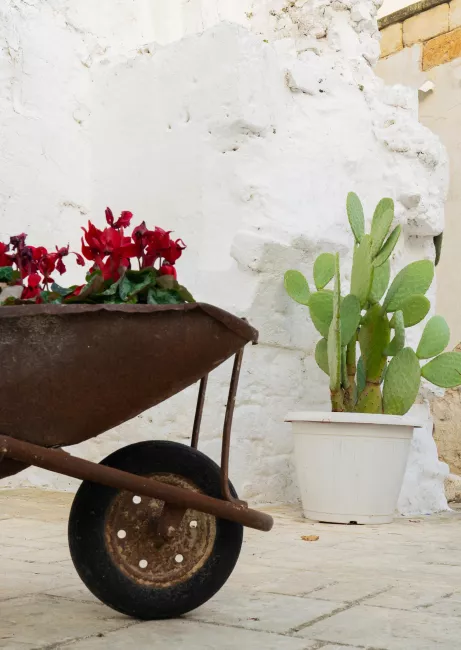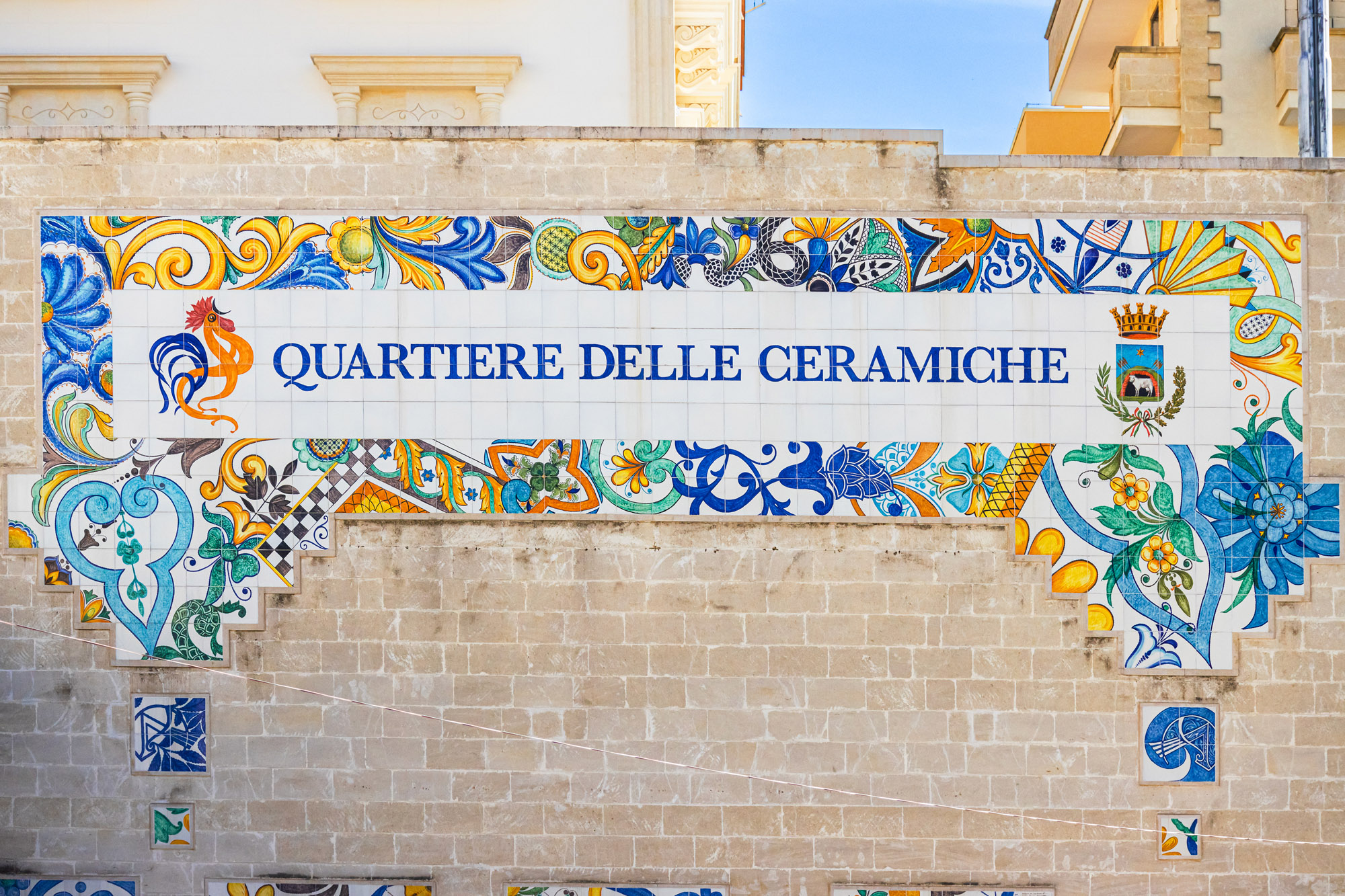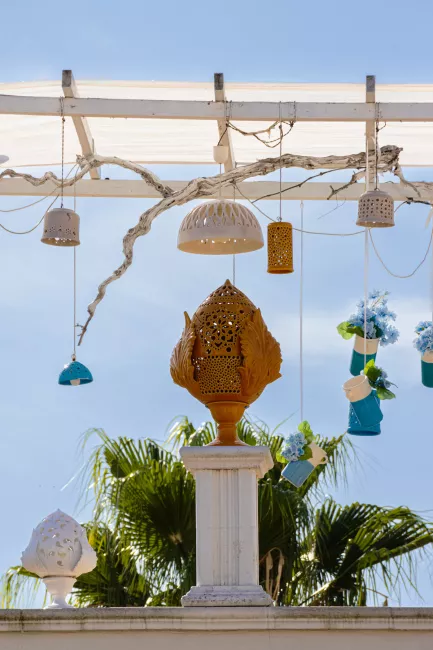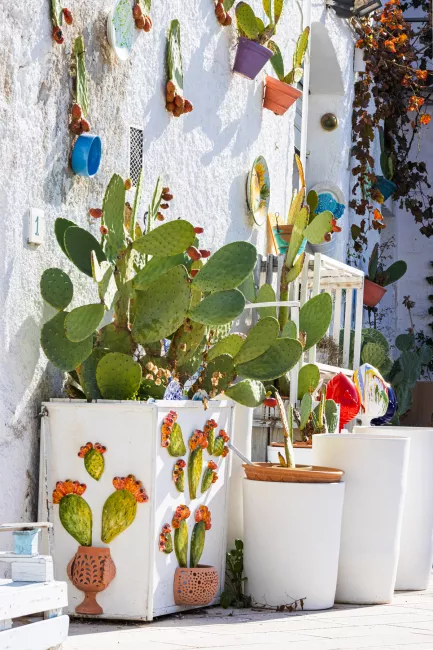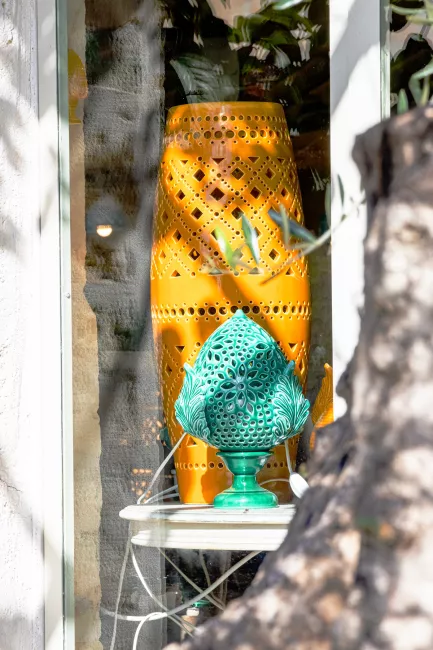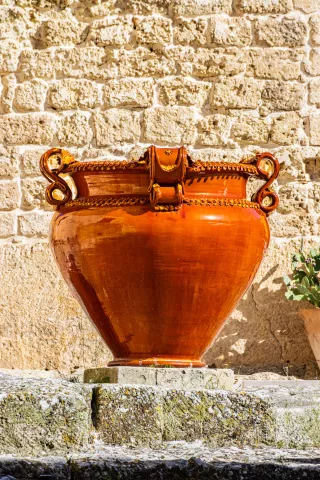
Grottaglie is one of the most popular tourist destinations in Puglia. It is a village that stands on one of the hills south of the Murgia, in the province of Taranto.
The worldwide fame is the result of a historic production of DOC ceramics, however the village is characteristic in itself; in fact Grottaglie derives from the Latin definition 'Cryptae Aliae', or several caves.
The history of Grottaglie ceramics
The history of pottery dates back to the 8th century BC. Today it is a real tradition based on the working of clay, which will not only have a functional but also a decorative use.
Each alley in Grottaglie boasts the beauty of ceramic ornaments including plates, vases, favors and other objects but also the presence of cretari', skilled and knowledgeable craftsmen who continue to carry on such a characteristic tradition. In the village, near the Episcopo Castle, an entire district dedicated to ceramics stands out: the 'Camennere' or 'camenn'ri' district, translated as fireplaces.
Digging around the town, fragments and small works of art were found that can be traced back to the period between the Paleolithic and the Middle Ages.
Grottaglie is rich in calcareous tuff rock formations, the primary source of clay. Once the farmers hoed with 'musu' inside the quarries, as deep as possible, to find a better quality clay, which was collected and brought to the artisans.
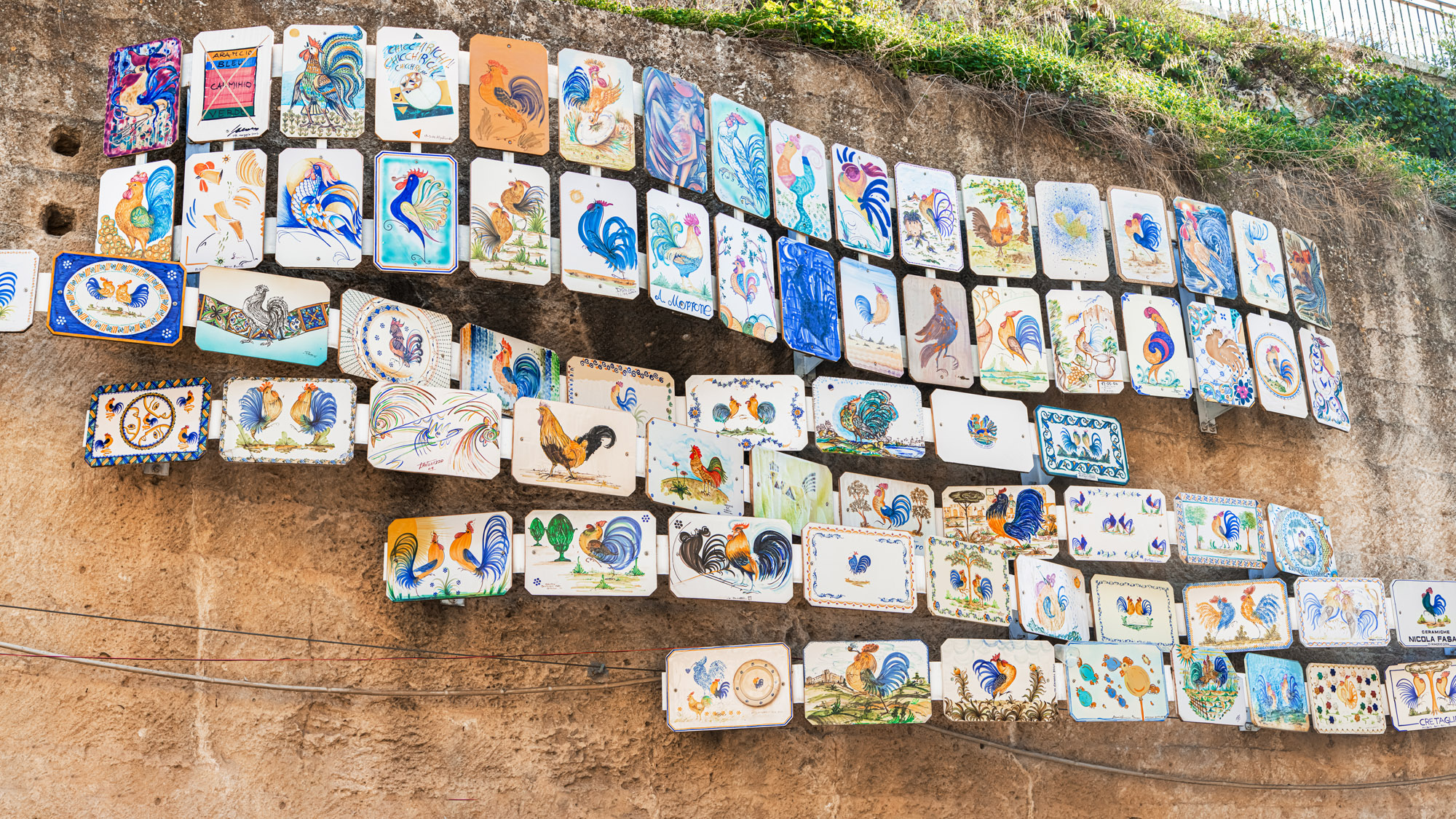
Lacking the equipment currently in use, they worked the raw clay meticulously and painstakingly. In detail, the process required several craftsmen, who respectively dealt with each single operation. The first (palacemaker) was responsible for breaking the clay blocks with an iron hammer, followed by the 'stompa creta' who pounded the coarse dust with his feet. Then the 'faenzaru' shaped the clay on the wheel. At the time the product was almost finished, the only thing missing was the cooking inside a furnace which was taken care of by the 'caminaru'.
During the first processing. only ceramics for use were produced, for example bowls and plates but during the 1500s they began to try their hand at producing accessories for places of worship such as columns and stoups but not only. The production of 'scàndole', terracotta tiles, was used to cover the dome of the Mother Church. In the following centuries, ceramics was used for the creation of precious jugs and tureens, up to the 19th century where, under the advice of the more affluent classes, the craftsmen created real works of art. inspired by that of Romagna.
In this period Grottaglie became the main center for the production of ceramics in the entire Terra d'Otranto.
Every single creation was made according to one's needs. Totally different shapes and colors. Even today many ceramics are used to welcome friends and family during important lunches, however their use has more of an aesthetic and traditional value.
Ceramics are furnishing and decorative accessories for both the interiors and exteriors of homes.
In the center of Grottaglie it is as if time had stopped, in fact, although they also use equipment to facilitate the processing, the craftsmen prefer manual work.
History is constantly evolving and this is what distinguishes the ceramics of this area; there is no precise historical period to attribute them to and that is what makes them unique.
Types of ceramics from Grottaglie
Each product is different in style, shape and iconography but we can define ceramics in some types.
One of the best-known ceramics is the 'capasonara one, the more traditional one, with rustic features, purely used for the creation of pans, crockery and all that is needed in everyday life. The other type of ceramic is the 'faenzara', once attributable to the wealthy class, with complex workmanship and impeccable details. Faience tiles are more common for vases, jars and the like.
Although the ceramics are strictly divided by use, and can be associated with a finish based on the 'four-colour process', a traditional and characteristic decoration for four colours: ocher yellow, rotten green, blue and manganese for a vivid and unique beauty; there is a total white selection; candid, refined and elegant. Commonly known as the 'whites' of Grottaglie, locally 'pumi', essential but perfect ceramics.
Pottery symbols of prosperity
Particular attention is also paid to the production of leaves and shoots, symbols attributed to prosperity, sometimes made of ceramic. Very common among the narrow streets in the center of Grottaglie.
But it is not only the ceramics that make this village characteristic, the natural elements, the warm sun but above all the locals play an important role, still rich in values and traditions that make the area a unique territory to be safeguarded. However, it is Grottaglie's ceramics that are recognized worldwide for their characteristic beauty and versatility.
